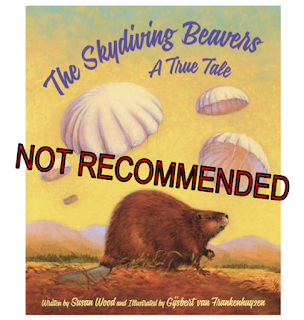Today, I am sharing a Facebook post written by by Carter Meland. He's a professor in American Indian Literature at the University of Minnesota, and a White Earth Anishinaabe descendent. With his permission, I'm sharing what he had to say about the non-Native writer, William Kent Krueger, who writes books you'll find over in the adult section of your library. [Update: See Tiffany Midge's essay, American(Indian) Dirt for another Native writer's criticisms of non-Native authors.]
Carter wants people to read Ojibwe writers instead of Krueger. So do I. He showed us a photo of four books. It includes books I also highly recommend: Murder on the Red River by Marcie Rendon, and Firekeeper's Daughter by Angeline Boulley.
Why am I sharing Carter's post? Because people who read Krueger are often the same people who acquire and edit books at publishing houses, and people who review them for review journals, and people who buy them for libraries.
If you are one of those people, your head is filled with problematic content about Native peoples that gets in the way of providing readers with accurate stories about Native people!
You know--and I know--that the field of children's literature is changing. That change includes letting go of the Tony Hillerman's and the William Kent Kruegers and so many other white writers who misrepresent Native peoples. Their appropriations and misrepresentations contribute to a cycle of harm. Let's disrupt that cycle. Read Native Writers.
You know--and I know--that the field of children's literature is changing. That change includes letting go of the Tony Hillerman's and the William Kent Kruegers and so many other white writers who misrepresent Native peoples. Their appropriations and misrepresentations contribute to a cycle of harm. Let's disrupt that cycle. Read Native Writers.
Here's Carter's post:
****
From the American Indian Studies prof diaries, episode 271 (it's a long one in social media terms):
A relative posted about a book they really liked by a non-Native novelist who has made his career (and mucho zhooniya [$$$]) by writing about Anishinaabe people. A fellow by the name of Krueger. I have no argument over whether or not he is a good writer, but I think we need to have a discussion about cultural appropriation (I promised I wouldn't open the appropriation can of worms on my relative's timeline).
I read a couple of this novelist's early books and found them decent enough mysteries, but I could see absolutely no reason why the central character was Anishinaabe. His perspective (and the writer's perspective) are not rooted in Anishinaabe experience or teachings beyond factual research. I know in this genre of mystery that there needs to be educational material woven into the plot, but that just has the effect of making a life (even an imagined one) a museum placard. In reading a 2021 interview with the novelist, he mentions his protagonist is 3/4 Irish and 1/4 Ojibwe and the moment I see parsing blood quantum I see investment in settler colonialist systems of thought. We're not trying to replicate these ideas in front of a broad audience, we're trying to transform them, to let Anishinaabe values (as opposed to settler colonial ones) set the terms of conversation about identity and selfhood, not ideas that are designed to erase Native people from the landscape. Appropriation and the investment in settler colonial policy are two sides of the erasure coin.
This is a long setup to what I wanted to share, which is what you can do to push Native writers forward even if you feel the need to read works that may traffic in the sort of appropriation that Native communities too often experience. I think Sun Yung Shin and Tiffany Midge inspired this idea with ideas they've shared on fb over the years (miigwech!). This is what I wrote in response to my relative's post about the book for her and her friends to consider (slightly edited from the original):
As a specialist in American Indian Literature (and a White Earth Anishinaabe descendant) and knowing that many of you are liberal, good-hearted social justice people, I think we should at least think about issues of cultural appropriation in Krueger's books—he’s making bank on Anishinaabe experience. So what can you do to spread the wealth? I want to challenge all Krueger fans to also support Anishinaabe (Ojibwe) writers with their book purchases.
For those of you who want to read fiction that engages with the terror of boarding schools and the powerful healing potential in Anishinaabe worldviews, I suggest Indian Horse by Richard Wagamese. It is perhaps one of the most beautiful books I've ever read (I'm a lit prof and I read a lot!). For those of you who like more family drama-oriented work, read Linda LeGarde Grover's In the Night of Memory--the ending will leave you simultaneously smiling and weeping. For those of you who like Krueger's mysteries, go buy either of Marcie Rendon's Cash Blackbear mysteries (and a third is coming out soon) or Angeline Boulley's Firekeeper's Daughter--both these novelists write page-a-minute thrillers. All of these works are by Anishinaabe writers that center Anishinaabe characters in stories that center Anishinaabe cultural, social, and/or spiritual values not to translate them in some quasi-anthropological/educational way to non-Native audiences, but to share the power of Anishinaabe story and storytelling with those who want to hear more. The challenge I pose is that every time you buy or checkout a Krueger book, you also buy or checkout a book by one of the authors I've mentioned (or others you track down). This is a good way to increase the representation of Native writers and discover some great new books. It's a good way to change the world that you experience and to support (not appropriate) the work of Native storiers.


